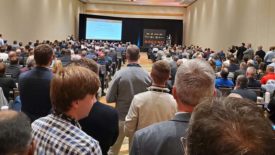Home » Technology and HVACR
Articles Tagged with ''Technology and HVACR''
The Many Uses of AI in HVAC
Artificial intelligence can perform or help out with many contracting business tasks, influencers say
Read More
AHR Expo 2024
Smart HVAC Products Work Smarter, Not Harder
Latest controls focus on simplifying the user experience
Read More
What HVAC Needs to Know about the Decarbonization Movement
New products and consumer education will be at the core of this transition, according to industry leaders
Read More
AI Can Be a Useful Tool, But Still Needs Human Oversight, Distributors Told
‘There is No Turning Back’
Read More
LG Touts Its HVAC Electrification Efforts During AHR Expo Presentation
‘We Have the Right Story’
Read More
Armstrong Pumps Up District Systems
District heating, cooling are vital in decarbonization efforts, company says
January 23, 2024
Honeywell Releases Advance Controls for Buildings at AHR Expo
New platform enhances cybersecurity, network speeds, and innovative technologies
Read More
Building a Data Culture
It takes the right automation, visual scoreboards, asking questions, and integrating deeply
Read More
Copyright ©2024. All Rights Reserved BNP Media.
Design, CMS, Hosting & Web Development :: ePublishing












